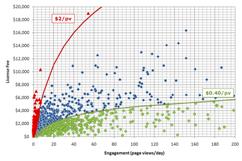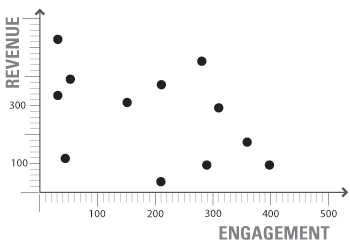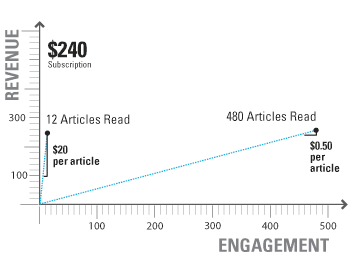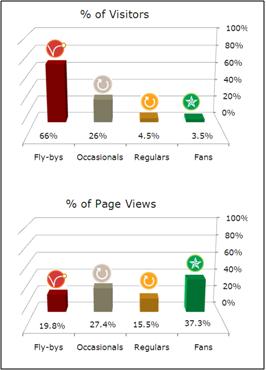
Posted by: Matt Shanahan In the previous blog post on unit cost of engagement, the Demand Map™ was used to correlate subscriber engagement with subscription fees. Using minimum and maximum unit costs of engagement, the Demand Map™ segments subscribers into those that are overpaying and underpaying for the service. Aligning actual subscriber engagement to be within the minimum and maximum unit costs of engagement is the revenue uplift potential for a publisher. How can a publisher quantify the uplift potential? Well, the Demand Map™ can answer that question. The chart on the right is a sample of what an actual Demand Map™ looks like. Let me explain the what you will see in the DemandMap™ The horizontal axis is the unit […]









